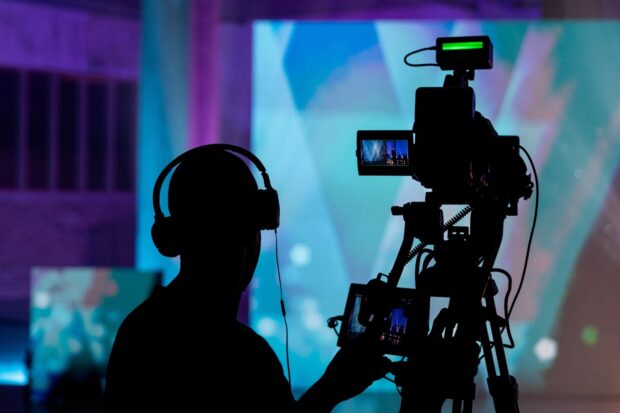Cinematography is often referred to as the art of painting with light, a description that captures its profound impact on filmmaking. From framing a scene to orchestrating the interplay of light and shadow, cinematographers shape the visual narrative of a film, transforming a script into a living, breathing story. Their work often operates in the background, but the impact of their artistry resonates with every frame on the screen. Brendan Geier of Madison, New Jersey, a filmmaker himself, recognizes the unique role cinematographers play in defining the emotional and aesthetic tone of a film, marking them as some of cinema’s most vital yet unsung heroes.
The Birth of Cinematic Artistry
The origins of cinematography trace back to the silent era, where filmmakers relied solely on visual storytelling to convey emotions and narratives. Early pioneers like Georges Méliès and D.W. Griffith used innovative camera techniques to captivate audiences and establish the foundations of visual storytelling. It was during this time that the concept of the cinematographer, or director of photography, emerged as an integral part of the filmmaking process.
The introduction of sound in cinema brought new challenges and opportunities for cinematographers. With the advent of synchronized dialogue, lighting, and framing had to adapt to accommodate microphones and other equipment. Despite these obstacles, cinematographers of the early 20th century laid the groundwork for modern filmmaking, experimenting with camera movements, focus, and exposure to achieve greater storytelling depth.
The Golden Age of Cinematography
The mid-20th century marked a golden age for cinematography, as technological advancements and creative ambition pushed the medium to new heights. Cinematographers like Gregg Toland revolutionized the field with groundbreaking techniques that are still studied and emulated today. Toland’s work on Citizen Kane introduced deep focus photography, allowing every element of a scene to remain in sharp detail. This technique not only added depth to the visuals but also mirrored the film’s intricate narrative structure.
During this period, color cinematography also came to prominence, providing new tools for storytelling. Films like Gone with the Wind and The Wizard of Oz showcased the emotional power of color, using it to heighten drama and create unforgettable imagery. Cinematographers began to explore how color palettes could evoke mood and atmosphere, further solidifying their role as storytellers.
The Cinematic Visionaries of the New Wave
The 1960s and 1970s brought a wave of experimentation and innovation to cinematography, driven by the emergence of new filmmaking movements around the world. In France, the Nouvelle Vague (New Wave) introduced handheld cameras and natural lighting, creating a raw, documentary-style aesthetic that challenged traditional filmmaking norms. Cinematographers like Raoul Coutard worked closely with directors like Jean-Luc Godard to craft visually bold films that redefined the language of cinema.
Meanwhile, in the United States, cinematographers like Gordon Willis became known for their mastery of light and shadow. Willis, often referred to as the “Prince of Darkness,” revolutionized the use of low lighting in films like The Godfather. His approach not only enhanced the film’s mood and realism but also reflected the moral ambiguity of its characters. The daring choices of these cinematographers paved the way for a new era of creative freedom in filmmaking.
Technology and Innovation
The evolution of cinematography has always been intertwined with advancements in technology. The transition from analog to digital filmmaking marked one of the most significant shifts in the industry, offering cinematographers greater flexibility and precision. Digital cameras allowed for extended shooting times, instant playback, and the ability to capture images in challenging lighting conditions. These innovations expanded the creative possibilities for cinematographers, enabling them to experiment with new techniques and styles.
At the same time, visual effects and computer-generated imagery (CGI) have become integral to modern filmmaking. Cinematographers must now collaborate closely with visual effects artists to seamlessly integrate live-action footage with digital elements. This collaboration requires a deep understanding of both traditional cinematographic principles and cutting-edge technology, as seen in films like The Matrix and Avatar.
The Emotional Power of Cinematography
While technology has transformed the tools available to cinematographers, the essence of their craft remains rooted in emotion. A well-composed frame can evoke joy, sorrow, fear, or wonder, often without the need for dialogue or explanation. Cinematographers use light, color, and composition to guide the audience’s focus and elicit specific emotional responses.
Take, for instance, the use of natural lighting in Terrence Malick’s The Tree of Life. Cinematographer Emmanuel Lubezki employed long takes and soft, diffused light to create a sense of intimacy and transcendence. This approach mirrored the film’s themes of memory and spirituality, demonstrating how cinematography can elevate a story to profound heights.
The Legacy of Cinematographers
The impact of cinematographers extends far beyond the films they create. Their work influences other art forms, from photography to video games, and shapes the way we perceive visual storytelling. Iconic shots and sequences become part of our cultural lexicon, inspiring future generations of filmmakers to push the boundaries of what is possible.
As audiences, we often take the work of cinematographers for granted, focusing instead on the performances and dialogue that drive a film’s narrative. Yet, it is the cinematographer’s vision that brings the story to life, transforming words on a page into images that resonate deeply and linger in our memories.
Celebrating the Unsung Heroes
Cinematography is a collaborative art, requiring a delicate balance of technical expertise and creative intuition. Cinematographers must work closely with directors, production designers, and lighting crews to realize a unified vision. This collaborative spirit is what makes their work so compelling and essential to the art of filmmaking.
As we continue to celebrate the magic of cinema, it is worth pausing to recognize the contributions of these behind-the-camera artists. Through their dedication and innovation, cinematographers have not only revolutionized filmmaking but also enriched our collective imagination, one frame at a time.
